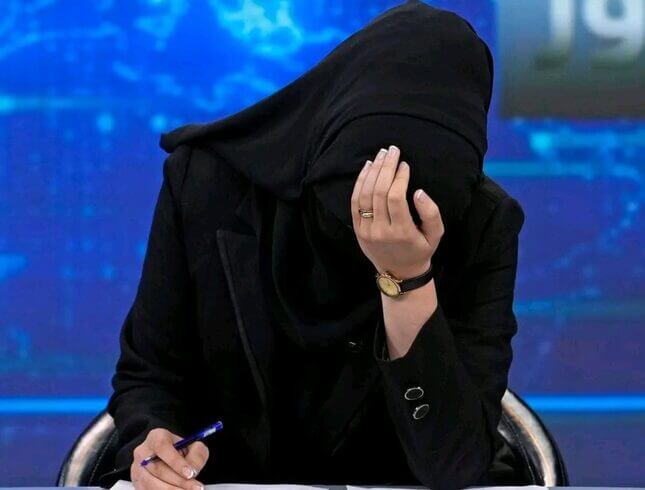Male Journalists in Afghanistan Are Wearing Masks to Support Female Colleagues, Protest Taliban
After the Taliban ordered all women on news channels to cover their faces, their male colleagues are masking up in support.
EntertainmentEntertainment

On May 19, the Taliban ordered every female television presenter to cover their face while on air. This followed an earlier decree that all women must be concealed from head to toe in public. Now, in a viral protest on social media known as #FreeHerFace, dozens of men—including newsroom leaders—from major outlets across Afghanistan are standing in solidarity with their colleagues by wearing face masks of their own.
One male journalist told the Guardian that he wept upon seeing his colleague put a mask on her face. “I then decided to wear a mask myself and protest,” he said, adding that it made him realize how difficult it is for women to live in a place like Afghanistan. Another said he felt as if he was being grabbed by the throat:
A 29-year-old male anchor on a private television channel, who did not want to be named due to security concerns, told the Guardian he and other male colleagues had put on masks to work in the past two days. When the Taliban order reached their office, he said, female colleagues were clearly dispirited. “Performing while wearing a mask is very annoying,” he said. “When I perform with a mask, I feel like someone has grabbed me by the throat and I cannot speak.”
The order came from the Taliban’s Ministry for the Propagation of Virtue and the Prevention of Vice—an entity feared for its merciless public beatings and imprisonment even for women bearing their wrists, hands or ankles in public. It was first formed by the Taliban in 1996 but was dissolved after the U.S. invasion in 2001—and reinstated almost immediately when the Taliban returned to power in 2021.
-

-

-

-

-

-

-

-

-

-

-

-

-

-

-

-

-

-

-

-

-

-

-

-

-

-

-

-

-

-

-

-

-

-

-

-

-

-

-

-








































